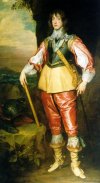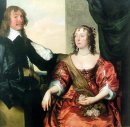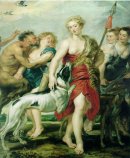|
Ferrara Arte, public company formed by the Municipality and the Local Provincial Government of Ferrara with the purpose to organise art exhibitions, presents in Palazzo dei Diamanti, from 28 March to 27 June 1999, the exhibition Rubens and his Century. The exhibition arrives in Ferrara from Mexico where it opened on November 5 1998 and closed on February 28 1999. Organised by the Museo Nacional de San Carlos, the
Consejo Nacional para la Cultura y las Artes, the Istituto Nacional de Bellas Artes of Mexico City and Ferrara Arte; the exhibition is curated by Matìas
Dìaz Padròn, Director of the Department of Flemish and Dutch Painting of the Prado Museum of Madrid.
The exhibition aims to present to the Italian public one of the most important chapters of art history through approximately eighty major works of
art, among which well-known works of Peter Paul Rubens (1577-1640) stand out, with fine paintings by other great artists of the period,
beginnings with Anton Van Dyck (1599-1641) and Jacob Jordaens (1593-1678). Alongside this, to give as complete a view as possible of the
period, there are works by a vast array of excellent artists who, together with Rubens, Van Dick and Jordaens, not only had a profound influence
on the whole of European art of the century, but also brought great renown of the Court of the Archdukes Alberto and Isabella of the Hapsburgs,
in Antwerp.
During the sixteenth century, Calvinism spread into the southern part of the Netherlands, and led to the almost total exclusion of art from places of
worship, but in 1585 when Alessandro Farnese regained Antwerp in the name of the King of Spain, there was a great revival of interest in sacred
imagines due to the fact that the city became one of the bastion of the Counter-reformation. The Archdukes Alberto and Isabella of the Hapsburgs,
who ruled the city on behalf of the King of Spain, made use of the best of Flemish painters, above all Rubens who was the finest interpreter of the
heroic ideals of the Court, thus promoting the arts to the high level of activity in order to put across their political, religious and military ideas.
A distinctive features of this exhibition is that it gathers together works coming from major European and American museum - the National Portrait
Gallery of London, the Petit-Palais Museum of Paris, the Fine Arts Museum of Budapest, the Borghese and Corsini Galleries of Rome, the Capodimonte
Museum of Naples, and that of Castelvecchio in Verona, the J. Paul Getty Museum of Malibù and the Museum of Art of Cleveland, etc .- and paintings
belonging to important Spanish private collections of the Museo Nacional de San Carlos and the Franz Mayer Museum of Mexico City, which are in
Italy for the first time.
The exhibition is divided into six large thematic section - religious subjects, mythological scenes, scenes of daily life, landscapes, still-lives and
portraits - which show the predominant iconography of the period, displaying Rubens's brilliant innovative abilities in this respect as well as from a
stylistic point of view. In the religious painting it is a clear that the language of art, devoted to arousing the emotional assent of the faithful with its
magnificence, its splendour, its vivid colours, its tension and movement, reflect the Jesuit intention to insist on the truth of its doctrine by moving of
spirit. This is represented at the highest level by, for example, the splendid Crucifixion of Van Dyck immersed in dramatic twilight; the delicate
Madonnas of Rubens, Hendrick de Clerck or Gaspar de Crayer, sometimes framed by elegant garlands of flowers, those of Jan Anton Van
der Baren and Nicolas Veerendael, important indication of the progressive inroads made by figurative baroque culture; the heroic theme of the
naked Christian martyr ennobled in the splendid Martyrdom of Saint Sebastian by Rubens, which reconciles the tradition of classical statuary with
the glory of the faith. Besides the works of Rubens and Jordaens, the mythological scenes, influenced by reconsideration of Greek and Latin
culture, are represented in the works of Vincent Adriaenssens and Frans Francken the Younger with great vigour and strong feeling. In the scenes of daily life the two major artists are Adriaen Brouwer, ironic and acute in his fine indoor scenes, and David Teniers the Younger,
virtuoso of technique and brush, filling his fascinating countryside subject of irrepressible vitality. In the art of portrait it was Rubens who overcome the reserve that was characteristic of earlier works and which can still be seen in the paintings of Justus Sustermans; Rubens fills his canvas with ardour and more complex composition. It is to Van Dyck , however, the pre-eminent portrait painter, that one must look for the
new, decisive ways of working which lie at the origins of the birth of modern portraiture. In the still-lives, sometimes full of reality and sensuality,
sometimes of elegant symbolism, notable works are by Cornelis de Heem, Jan Fijt and Franciscus Gysbrechts. Landscape, most realistic in the
paintings by artists working in the late 16th century such as Jan Brueghel and Joost de Momper, gradually takes a more fantastic turn,
particularly in the visionary composition of Lucas Van Uden.
INFORMATIONS
Calendar:
"Rubens and his Century" 28 March - 27 June1999
Address:
Palazzo dei Diamanti, Corso Ercole I d'Este, 21- Ferrara - Italy
Organisation:
Ferrara Arte S.p.A. with the support of the Museo Nacional de San Carlos and the Istituto Nacional de Bellas Artes di Città del
Messico. Exhibition curator Matias Diaz Padròn.
Catalogue:
Catalogue published by Ferrara Arte, curate by Matias Diaz Padròn featuring Diaz Padròn, Aida Padròn Merida, John Everaert, Arnout Balis,
Rogelio Ruiz Gomar, Roxana Velàsquez Martinez del Campo
Opening times:
all days from 9.00 to 19.00; full ticket italian lire 12.000 , reduced ticket italian lire 10.000, groups italian lire 8.000
Reservation:
telephone 0039 +532.209988 - +532.204828, fax 0039 +532.203064
WEB: http://www.comune.fe.it
E-MAIL: arte.comfe@fe.nettuno.it
ARTISTS IN THE EXHIBITION
Pieter Paul Rubens (1577-1640)
Vincent Adriassens (1595-1675)
Adrian Brouwer (1605 o1606-1638)
Pieter Bruegel Jr. (1564-1637)
Jan Bruegel dei Velluti (1568-1625)
Jan Bruegel il Giovane (1601-1678)
Jan Cossiers (c. 1600-1671)
Hendrick de Clerck (1570-1630)
Gaspar de Crayer (1584-1669)
Cornelis de Heem (1631-1695)
Joost de Momper (1564-1635)
Cornelis de Vos (1584-1651)
Jan Fijt (1611-1661)
Frans Francken il Giovane (1581-1642)
Franciscus Gysbrechts (XVII Century)
Jacob Jordaens (1593-1678)
Christiaan Luycks (1623-1670)
Frans Luychx (1604-1668)
Vinctor Mahu (?-1700)
Pieter Neefs (1578-1656)
Marten Rijckaert (1578-1631)
Anthonis Sallaert (Sallaerts) (1590-1657/58)
Gerard Seghers (1591-1651)
Justus Sustermans (1597-1681)
Michiel Sweerts (1618-1664)
David Teniers Jr. (1610-1690)
Johannes Antonius Van der Baren (1616-1686)
Anton Van Dyck ( 1599-1641)
Willem Van Herp (1614-1677)
Pieter Van Lint (1609-1690)
Adriaen Van Stalbemt (1580-1662)
Theodor Van Thulden (1606-1669)
Lucas Van Uden (1595-1672)
Nicolas Van Veerendael (1640-1691)
Joanna Vergowen (? 1568-1614)
Jan Wildens (1586-1653)
Victor Wolvoet Jr. (1612-1652)
|
 fig. 1
fig. 1 fig. 2
fig. 2 fig. 3
fig. 3 fig. 4
fig. 4